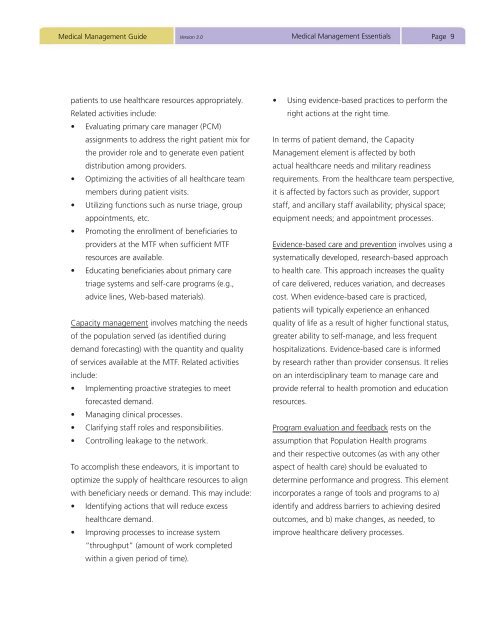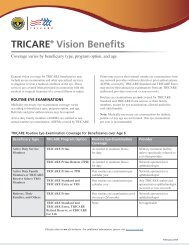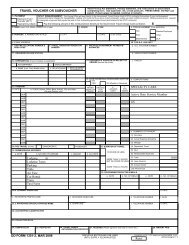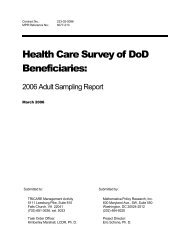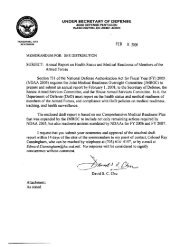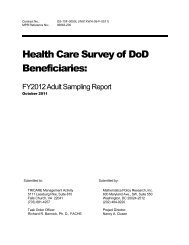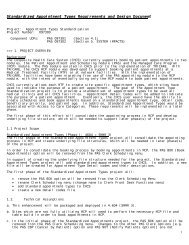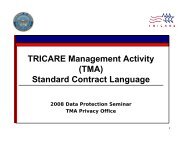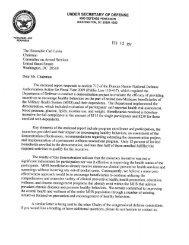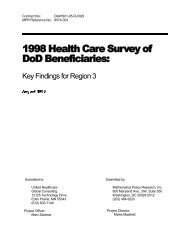Medical Management Guide, 2009, Version 3.0 - Tricare
Medical Management Guide, 2009, Version 3.0 - Tricare
Medical Management Guide, 2009, Version 3.0 - Tricare
- No tags were found...
Create successful ePaper yourself
Turn your PDF publications into a flip-book with our unique Google optimized e-Paper software.
<strong>Medical</strong> <strong>Management</strong> <strong>Guide</strong><strong>Version</strong> <strong>3.0</strong><strong>Medical</strong> <strong>Management</strong> EssentialsPage patients to use healthcare resources appropriately.Related activities include:• Evaluating primary care manager (PCM)assignments to address the right patient mix forthe provider role and to generate even patientdistribution among providers.• Optimizing the activities of all healthcare teammembers during patient visits.• Utilizing functions such as nurse triage, groupappointments, etc.• Promoting the enrollment of beneficiaries toproviders at the MTF when sufficient MTFresources are available.• Educating beneficiaries about primary caretriage systems and self-care programs (e.g.,advice lines, Web-based materials).Capacity management involves matching the needsof the population served (as identified duringdemand forecasting) with the quantity and qualityof services available at the MTF. Related activitiesinclude:• Implementing proactive strategies to meetforecasted demand.• Managing clinical processes.• Clarifying staff roles and responsibilities.• Controlling leakage to the network.To accomplish these endeavors, it is important tooptimize the supply of healthcare resources to alignwith beneficiary needs or demand. This may include:• Identifying actions that will reduce excesshealthcare demand.• Improving processes to increase system“throughput” (amount of work completedwithin a given period of time).• Using evidence-based practices to perform theright actions at the right time.In terms of patient demand, the Capacity<strong>Management</strong> element is affected by bothactual healthcare needs and military readinessrequirements. From the healthcare team perspective,it is affected by factors such as provider, supportstaff, and ancillary staff availability; physical space;equipment needs; and appointment processes.Evidence-based care and prevention involves using asystematically developed, research-based approachto health care. This approach increases the qualityof care delivered, reduces variation, and decreasescost. When evidence-based care is practiced,patients will typically experience an enhancedquality of life as a result of higher functional status,greater ability to self-manage, and less frequenthospitalizations. Evidence-based care is informedby research rather than provider consensus. It relieson an interdisciplinary team to manage care andprovide referral to health promotion and educationresources.Program evaluation and feedback rests on theassumption that Population Health programsand their respective outcomes (as with any otheraspect of health care) should be evaluated todetermine performance and progress. This elementincorporates a range of tools and programs to a)identify and address barriers to achieving desiredoutcomes, and b) make changes, as needed, toimprove healthcare delivery processes.


